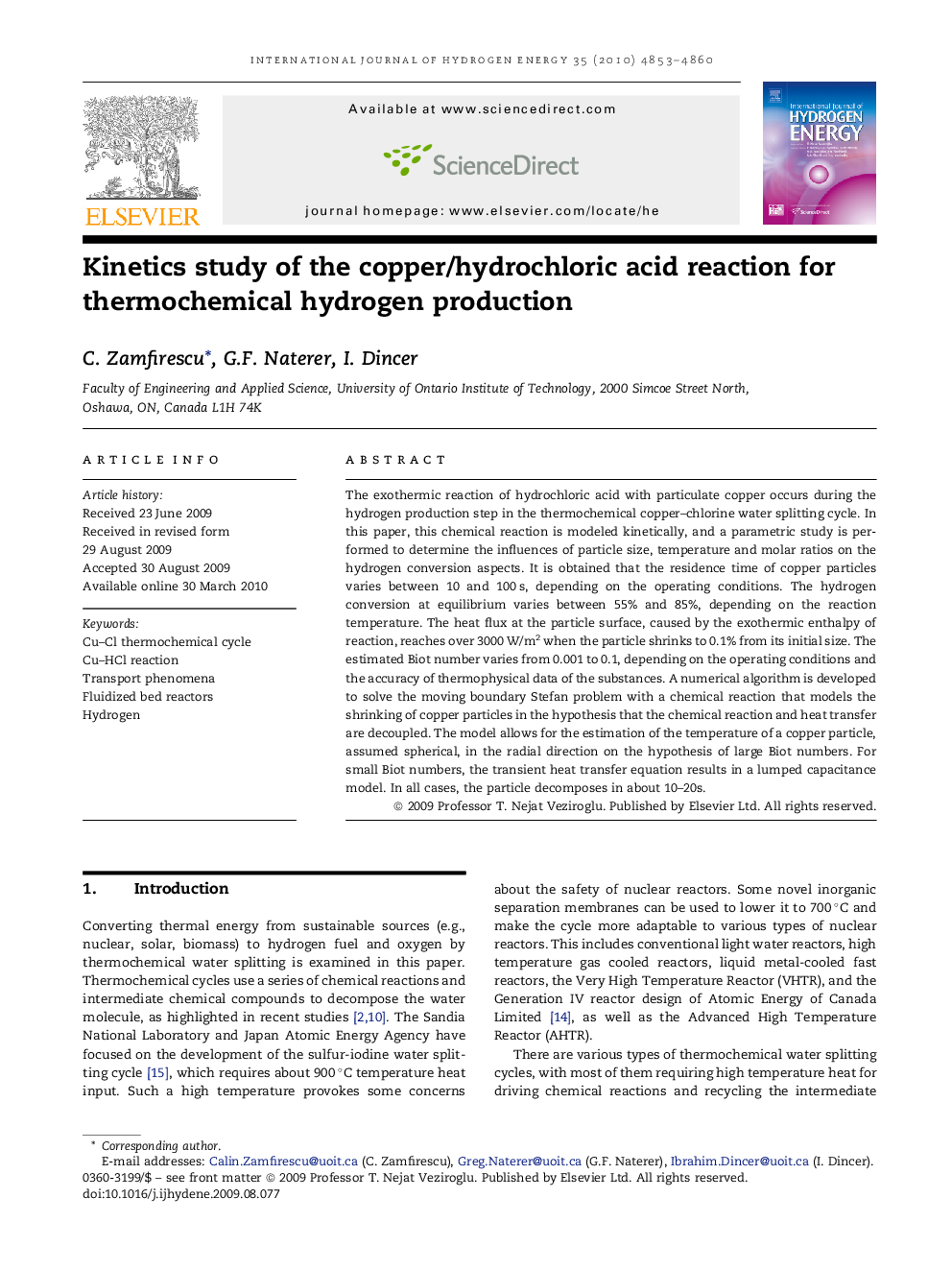| Article ID | Journal | Published Year | Pages | File Type |
|---|---|---|---|---|
| 1282829 | International Journal of Hydrogen Energy | 2010 | 8 Pages |
The exothermic reaction of hydrochloric acid with particulate copper occurs during the hydrogen production step in the thermochemical copper–chlorine water splitting cycle. In this paper, this chemical reaction is modeled kinetically, and a parametric study is performed to determine the influences of particle size, temperature and molar ratios on the hydrogen conversion aspects. It is obtained that the residence time of copper particles varies between 10 and 100 s, depending on the operating conditions. The hydrogen conversion at equilibrium varies between 55% and 85%, depending on the reaction temperature. The heat flux at the particle surface, caused by the exothermic enthalpy of reaction, reaches over 3000 W/m2 when the particle shrinks to 0.1% from its initial size. The estimated Biot number varies from 0.001 to 0.1, depending on the operating conditions and the accuracy of thermophysical data of the substances. A numerical algorithm is developed to solve the moving boundary Stefan problem with a chemical reaction that models the shrinking of copper particles in the hypothesis that the chemical reaction and heat transfer are decoupled. The model allows for the estimation of the temperature of a copper particle, assumed spherical, in the radial direction on the hypothesis of large Biot numbers. For small Biot numbers, the transient heat transfer equation results in a lumped capacitance model. In all cases, the particle decomposes in about 10–20s.
